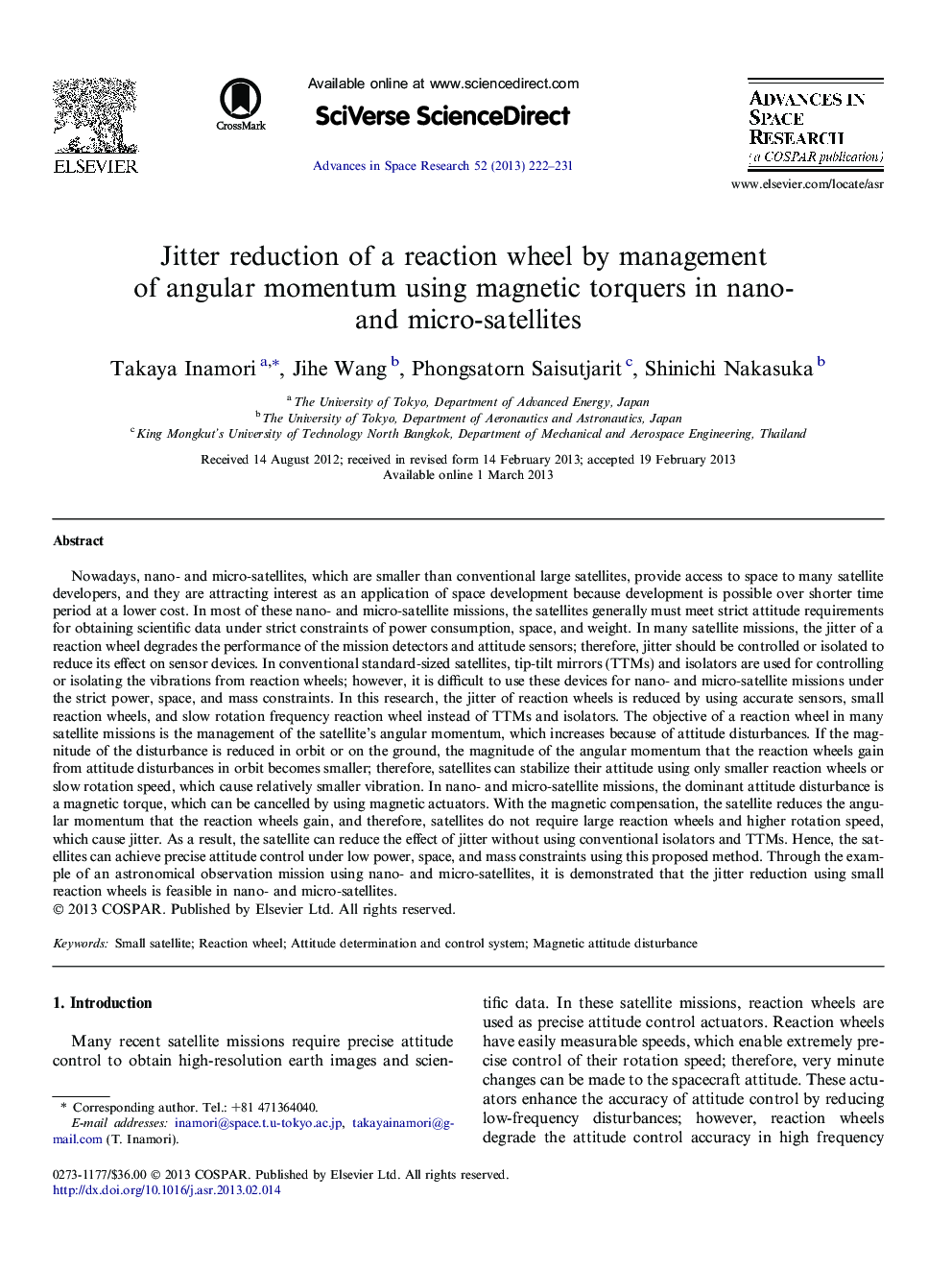| کد مقاله | کد نشریه | سال انتشار | مقاله انگلیسی | نسخه تمام متن |
|---|---|---|---|---|
| 1764239 | 1020046 | 2013 | 10 صفحه PDF | دانلود رایگان |

Nowadays, nano- and micro-satellites, which are smaller than conventional large satellites, provide access to space to many satellite developers, and they are attracting interest as an application of space development because development is possible over shorter time period at a lower cost. In most of these nano- and micro-satellite missions, the satellites generally must meet strict attitude requirements for obtaining scientific data under strict constraints of power consumption, space, and weight. In many satellite missions, the jitter of a reaction wheel degrades the performance of the mission detectors and attitude sensors; therefore, jitter should be controlled or isolated to reduce its effect on sensor devices. In conventional standard-sized satellites, tip-tilt mirrors (TTMs) and isolators are used for controlling or isolating the vibrations from reaction wheels; however, it is difficult to use these devices for nano- and micro-satellite missions under the strict power, space, and mass constraints. In this research, the jitter of reaction wheels is reduced by using accurate sensors, small reaction wheels, and slow rotation frequency reaction wheel instead of TTMs and isolators. The objective of a reaction wheel in many satellite missions is the management of the satellite’s angular momentum, which increases because of attitude disturbances. If the magnitude of the disturbance is reduced in orbit or on the ground, the magnitude of the angular momentum that the reaction wheels gain from attitude disturbances in orbit becomes smaller; therefore, satellites can stabilize their attitude using only smaller reaction wheels or slow rotation speed, which cause relatively smaller vibration. In nano- and micro-satellite missions, the dominant attitude disturbance is a magnetic torque, which can be cancelled by using magnetic actuators. With the magnetic compensation, the satellite reduces the angular momentum that the reaction wheels gain, and therefore, satellites do not require large reaction wheels and higher rotation speed, which cause jitter. As a result, the satellite can reduce the effect of jitter without using conventional isolators and TTMs. Hence, the satellites can achieve precise attitude control under low power, space, and mass constraints using this proposed method. Through the example of an astronomical observation mission using nano- and micro-satellites, it is demonstrated that the jitter reduction using small reaction wheels is feasible in nano- and micro-satellites.
Journal: Advances in Space Research - Volume 52, Issue 1, 1 July 2013, Pages 222–231